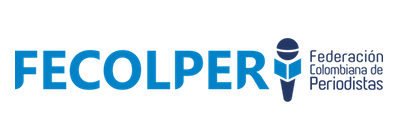Concentration throughout the sectors
There are high levels of cross-media audience concentration y the TV and radio sector in particular, while print and online media overlap in terms of ownership and content. There are also high levels of ownership concentration in the TV sector.
High cross-media audience concentration threatens media pluralism
The eight largest media groups concentrate 78% cross-media audience share which means almost 4 out of 5 Colombians turn to information provided by those media companies whenever they want to get informed. The three media groups with the highest audience concentration across all media sectors are Ardila Lülle Organization (28.7%), Santo Domingo Group (19.5%), and Luis Carlos Sarmiento Angulo Organization (7.3%).
Big families own online and offline news
Looking at the print sector, the same editorial houses - Casa Editorial El Tiempo, Casa Editorial El Heraldo, National Media Group and Metro International - that publish traditional newspapers also publish the popular free newspapers (ADN, Al Día, Q'hubo Extra and Metro) and thus dominate the entire print market. Casa Editorial El Tiempo gets 31% of the readership. National Media Group (GNM) reaches 30% of the readership – if you add print media produced independently by the participating families, the GNM even reaches 39% audience share. These families also own the country’s only press agency: COLPRENSA.
It is also noteworthy that amongst the media companies owned by the regional political elite, Casa Editorial El Heraldo has the highest readership. Although there are more than 650 digital news media in the country, the informative pages most consulted by Colombians are those of the digital versions of traditional media such as El Tiempo, El Espectador, and RCN, all belonging to the mentioned media and business groups.
Highly concentrated audio-visual media
Regarding audience concentration in the television sector, the commercial channels of the Organización Ardila Lülle and Grupo Empresarial Santo Domingo concentrate 74% of the national, regional, and local television audience, creating a duopoly in this sector. When Casa Editorial El Tiempo, owned by Luis Carlos Sarmiento Angulo (City TV and El Tiempo) and the Sistema de Medios Públicos (RTVC) are added, the total share of the four groups rises to 86%.
On the level of different television channels, 77.2% of the audience is concentrated on the top four national channels (Caracol, RCN, City TV and RCN Telenovelas). The remaining audience turns to 43 different channels to get TV news.
As for ownership concentration, two national private channels (Caracol and RCN) account for 78 % of total adverstising share in open television. Although trough the introduction of Digital Terrestrial Television (TDT) in Colombia, the number of national channels increased, this did not change the ownershop concentration in the sector on a national level.
Duopoly in national radio, lack of pluralism in regional radio
The audience reach of radio media in the country is also highly concentrated. Broadcasters belonging to two large economic groups (Organización Ardila Lülle and Grupo Prisa) account for 59% of the total radio share. Adding Organización Radial Olímpica brings the total for the three groups to 73%.
A lack of plurality is the principal impact of media concentration. Despite the variety of stations in the country, few offer information, opinion, or analysis. The combination of concentration and limited supply of informative programming allows the largest financial groups to introduce bias. This reality is exacerbated at regional level. In the absence of proper regulation that would allow mapping and control of the various forms of concentration -- such as licensing and the provision of radio spaces - regional radio stations increasingly just echo what is produced and broadcast in the major capital cities.
Independent media on the Internet, but for niche audiences
The presence of high-ranking independent and digital native media is noteworthy. This includes Minuto30.com, Las Dos Orillas and Pulzo. Native and independent digital media has gained relevance in recent years, especially for niche audiences. Four (4) of the ten (10) digital news media most consulted by opinion leaders in Colombia, according to Figures and Concepts, are native: La Silla Vacía, Kienyke, Las Dos Orillas and Razón Pública.
The independent websites, however, lack financial sustainability and are dependent on external resources in many cases.


